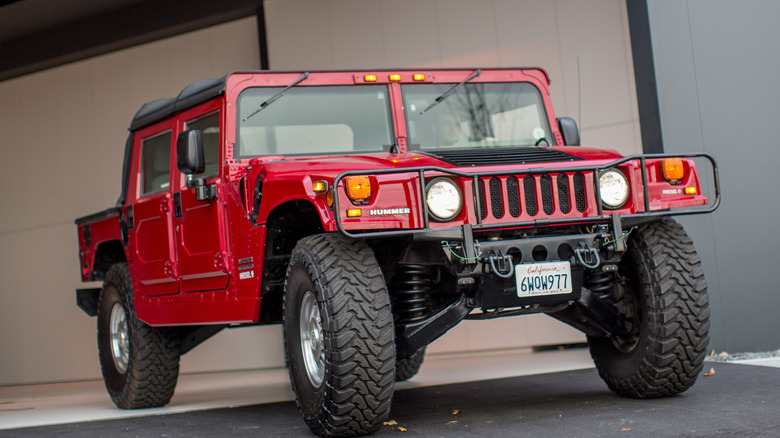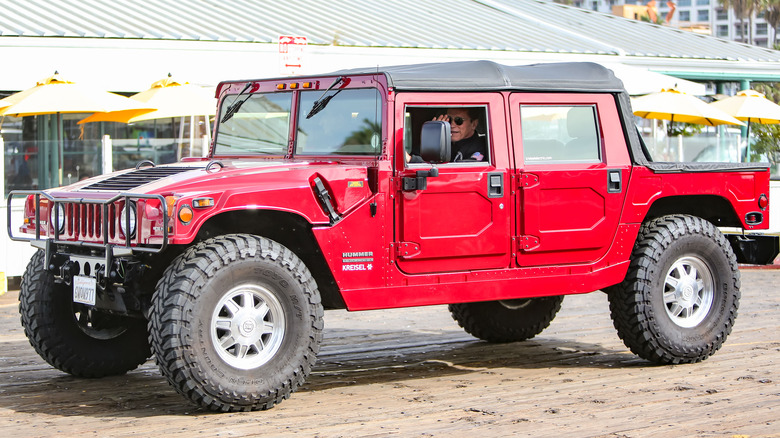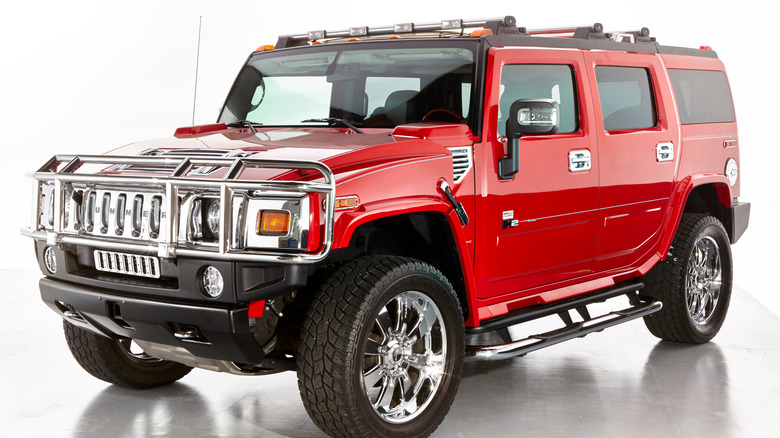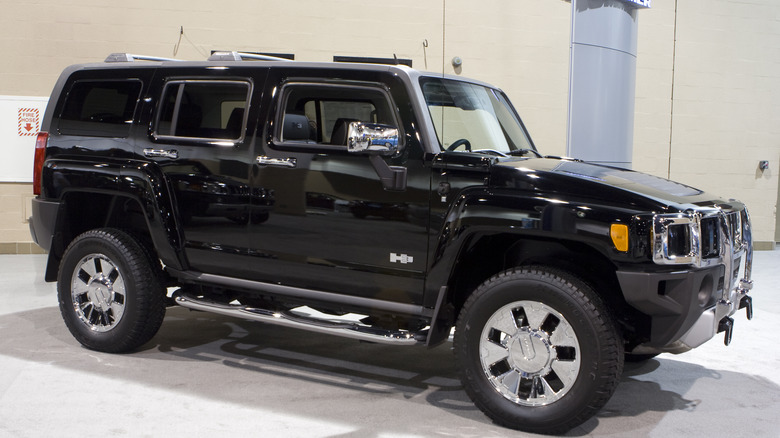War Machine To Street Machine: How Gulf War Humvees Became The Hummer
As the war in Vietnam was winding down, the U.S. military found itself sorely in need of a new vehicle to replace an aging fleet of Jeeps which hadn't changed significantly since their inception during World War II. The Army came up with a list of specifications for the new replacement vehicle which included a diesel engine, automatic transmission, and a 2,500 pound cargo capacity that would be suited to transporting heavier, modern weaponry.
Several manufacturers submitted prototype vehicles and after 600,000 miles of hard testing in all sorts conditions from sand to snow, AM General was awarded the contract to produce the High Mobility Multipurpose Wheeled Vehicle (or Humvee), with the first production versions ready in 1985.
The Humvee's first brush with battle was in Panama when the U.S. government invaded to overthrow dictator Manuel Noriega, but it wasn't until the First Gulf War a few years later when the impressive machine really got to show its mettle. The Humvee had four-wheel independent suspension with 37-inch tall tires that afforded it a whopping 16 inches of ground clearance. A full-time all-wheel drive system ensured that it could travel over or through any terrain, including water up to 60 inches deep. Because of its formidable size and capacity, each Humvee was said to be able to replace two old-school jeeps and an anti-tank missile trailer.
The Terminator was smitten with it
Around the same that the Humvee was delivering — literally and figuratively — for troops in Iraq, Austrian-American bodybuilder-turned-actor Arnold Schwarzenegger was working on the film "Kindergarten Cop" (It's not a tumor!) in Oregon. During his commute to the movie set one day, the future governor of California spied a convoy of military vehicles, including some of the Humvees, and it was love at first sight.
There's an urban legend that Schwarzenegger actually caused a car accident from braking so abruptly to get a better look at the Humvee. Whether that anecdote is true or not, there's no question that the actor became infatuated with getting a Humvee of his own. So much so that he visited AM General's factory in Indiana to persuade the manufacturer to sell a him a version of the beefy truck. In 1992, the brand finally acquiesced and the Hummer H1 was born.
In spite its celebrity endorsements and battlefield pedigree, the H1 was not a huge commercial success. Its comically enormous proportions made it difficult to park and sluggish to drive, while only being capable of seating four occupants. In the first 18 months, a paltry 1,000 units of the $50,000 (more than $100,000 in today's dollars) SUV had been sold. Still, whether niche product or not, the H1 remained a pop culture icon and a fixture among famous manly men such as Dennis Rodman, Mike Tyson, tennis star Andre Agassi, and author Tom Clancy.
GM brought the Hummer to prime time
In 1999, General Motors acquired the Hummer brand from AM General. Even though Arnold Schwarzenegger was never formally employed at AM General, GM donated $13 million to a charity of his choosing as compensation for his relentless promotion of the vehicle. GM's vision for Hummer was that of a somewhat smaller, more luxurious, but ultimately more practical vehicle that would appeal more to mainstream car buyers. The result was the Hummer H2 (above) in 2002.
Even though the H2 had the rugged, chunky looks of the original H1 and Humvee, it rode on a more pedestrian chassis derived from a heavy-duty Chevy pickup truck. Buyers could opt for niceties like heated seats, a power sunroof, and a DVD player. While the H2 was unquestionably more realistic than its predecessor, it was still a heavy machine that struggled to travel distances greater than 10 miles per gallon at a time when the U.S. was at war in the Middle East, underscoring dependence of foreign oil. Although the H2 sold briskly at first, its popularity gradually declined as it grew to represent American excess and overindulgence, even attracting protestors that vandalized the vehicles at new car dealerships.
Reinvented as a battery electric vehicle
In 2005, GM unveiled the smallest Hummer yet — the H3 — which was based on Chevy's new Colorado compact pickup truck that replaced the aging S-10. Along with the new model was a fresh advertising campaign targeting a wider demograhpic. A spokesperson for the brand told Slate that the H3 was an "approachable vehicle that will appeal to introverts, extroverts, vegans, and carnivores" and surprisingly enough, it did. In 2006, a record 71,524 Hummers rolled off the assembly line, but the celebration would be short lived.
While the H3 boasted better fuel economy than the H1 or H2, it still only managed about 16 miles per gallon at a time when fuel prices were spiking and consumers were wounded by the bursting of the housing bubble and ensuing Great Recession. Following GM's bankruptcy in 2009, an attempt was made to sell the Hummer brand, but with no buyer stepping forward, GM decided to kill it off instead.
Most enthusiasts probably thought that was the end of the Hummer legacy until a surprise move by GM in 2020 to bring back the hulking off-roader as a battery electric vehicle. In 2022, the Hummer triumphantly returned as the Hummer EV (or just HEV), a model within GM's GMC truck brand. Even though the all-electric powertrain is a kowtow to modern social norms, everything else about the truck is pure Hummer. The HEV weighs more than 9,000 pounds, costs well over $100,000, and has serious off-road chops with up to 16 inches of ground clearance available. Maybe history does repeat itself after all?



